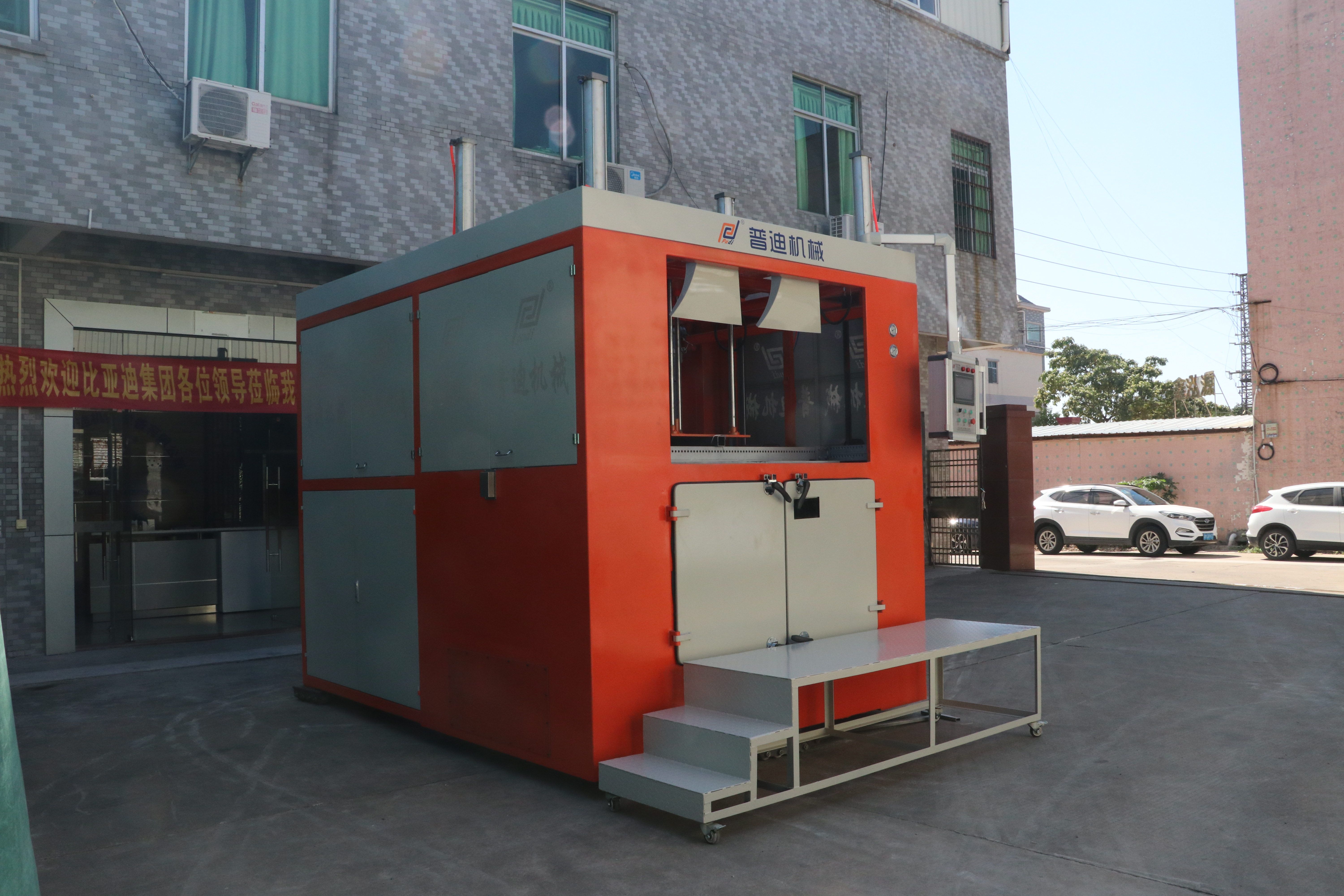Introduction to Vacuum Forming Machines: A Comprehensive
Overview
In the realm of manufacturing and product development, vacuum-forming machines play a pivotal role in shaping various materials into desired forms with precision and efficiency. These machines, with their versatile functionality, find applications across diverse industries, offering a cost-effective solution for producing a wide range of products. This article aims to provide a comprehensive understanding of vacuum-forming machines, delving into their functionality, types, applications, and associated benefits.
I. Introduction to Vacuum Forming Machines
Definition and Overview
At its core, vacuum forming is a thermoforming process where a thermoplastic sheet is heated until pliable, then stretched over a mold and vacuum-formed to create a specific shape. Vacuum-forming machines facilitate this process by providing the necessary heating elements, mold support, and vacuum systems.
Functionality of Vacuum Forming Machines
The functionality of vacuum-forming machines revolves around four key stages: heating, forming, cooling, and trimming. Firstly, the thermoplastic sheet is heated to a malleable state, typically using radiant heaters or infrared lamps. Once heated, the sheet is drawn over the mold, where vacuum pressure is applied to force the material into the desired shape. After forming, the material undergoes a cooling phase to solidify the shape, and finally, excess material is trimmed away to achieve the final product.
Applications of Vacuum Forming Machines
The versatility of vacuum-forming machines enables their application across a wide spectrum of industries. Common applications include packaging, where vacuum-formed trays and blisters provide protective enclosures for various products. Additionally, vacuum forming is extensively used in automotive manufacturing for producing interior components such as dashboards and door panels. Other sectors utilizing vacuum forming machines include aerospace, electronics, healthcare, and signage.
Benefits of Using Vacuum Forming Machines
The adoption of vacuum-forming machines offers several advantages for manufacturers and product developers. Firstly, the process is highly efficient, allowing for rapid production of complex shapes with minimal setup time. Moreover, vacuum forming is a cost-effective manufacturing method, particularly suitable for lowto medium-volume production runs. Additionally, the ability to use a wide range of thermoplastic materials enhances design flexibility and product customization, catering to diverse customer requirements.
II. Types of Vacuum Forming Machines
Manual Vacuum Forming Machines
Manual vacuum-forming machines are characterized by their simplicity and affordability, making them suitable for small-scale operations and prototyping. These machines typically feature a basic frame, a heating element, and a manual control interface. Operators manually position the thermoplastic sheet over the mold and activate the vacuum system to form the material. While manual machines offer a low-cost entry point into vacuum forming, they may lack the precision and efficiency of their automated counterparts.
Semi-Automatic Vacuum Forming Machines
Semi-automatic vacuum-forming machines bridge the gap between manual and fully automatic models, offering enhanced efficiency and control. These machines incorporate semi-automated features such as motorized sheet feeding and mold indexing, reducing manual intervention and improving production consistency. Semi-automatic machines are well-suited for medium-volume production runs where a balance between cost-effectiveness and automation is desired.
Fully Automatic Vacuum Forming Machines
Fully automatic vacuum-forming machines represent the pinnacle of automation in vacuum-forming technology. These advanced systems feature integrated heating, forming, cooling, and trimming processes, operated through programmable logic controllers (PLCs) or computer numerical control (CNC) systems. Fully automatic machines offer unparalleled production speed, accuracy, and repeatability, making them ideal for high-volume manufacturing environments.
III. Comparison of Vacuum Forming Machine Types
When selecting the appropriate type of vacuum-forming machine, several factors must be considered, including production volume, budgetary constraints, and operational requirements. Manual machines are well-suited for prototyping and small-scale production, offering affordability and simplicity. Semi-automatic machines provide a balance between cost-effectiveness and automation, catering to medium-volume production needs. Fully automatic machines are ideal for high-volume manufacturing, offering unmatched efficiency and precision, albeit at a higher initial investment.
IV. Factors Influencing the Selection of Vacuum Forming Machines
Several factors influence the selection of vacuum-forming machines, each tailored to specific production requirements. Production volume and scale dictate the level of automation and throughput capacity needed, with manual machines suitable for low-volume runs and fully automatic systems ideal for mass production. Budgetary constraints play a crucial role in determining the affordability and return on investment of the chosen machine type. Additionally, the complexity of products and designs, as well as operational considerations such as space constraints, must be taken into account when selecting the appropriate vacuum-forming machine.
V. Trends and Innovations in Vacuum Forming Technology
The field of vacuum forming continues to evolve with advancements in technology and materials, driving innovation and efficiency in manufacturing processes. Recent developments include the integration of digitalization and automation, leveraging robotics and AI-driven systems to optimize production workflows and enhance product quality. Sustainable practices and materials are also gaining prominence in vacuum forming, with a growing emphasis on eco-friendly alternatives and recyclable thermoplastics, aligning with global efforts towards sustainability and environmental responsibility.
VI. Conclusion
In conclusion, vacuum-forming machines represent a cornerstone of modern manufacturing, offering unparalleled versatility, efficiency, and cost-effectiveness across diverse industries. By understanding the functionality, types, applications, and benefits of vacuum forming machines, manufacturers and product developers can make informed decisions to optimize their production processes and meet the evolving demands of the market. As technology continues to advance and sustainability becomes increasingly important, vacuum-forming machines will remain at the forefront of innovation, driving the future of manufacturing towards greater efficiency and sustainability.


